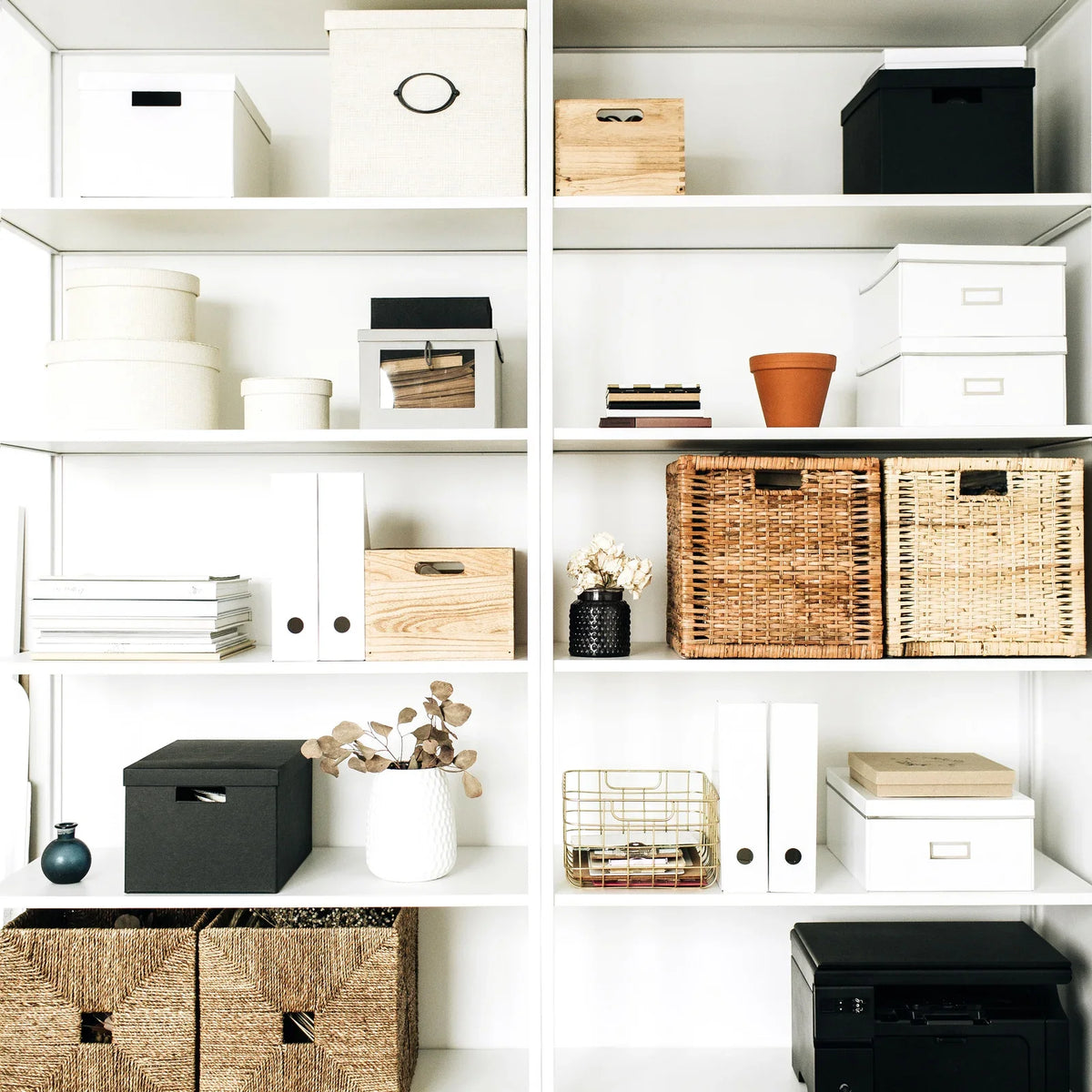
Discover the Art of Japanese Storage: A Guide to Minimalist Function and Beauty
|
|
Time to read 5 min
|
|
Time to read 5 min
In Japan, storage isn’t just about putting things away—it’s a thoughtful and refined practice that blends aesthetics, efficiency, and tradition. Especially in cities where space is at a premium, Japanese homes showcase a remarkable ability to maximize every square meter. From ancient storage wisdom to innovative modern furniture, this article takes a closer look at how Japanese storage systems can transform your living space into a tidy, peaceful, and functional sanctuary.
At its core, Japanese storage reflects a cultural value of simplicity and mindfulness. The idea isn’t to own less for the sake of minimalism alone, but rather to own wisely—to carefully choose what to keep, how to store it, and where to place it. This approach aligns with the traditional concept of “Chisoku” , or “knowing sufficiency,” which encourages contentment with what one has. Rather than accumulating items, the focus is on maintaining balance and clarity in the home.
In Japanese homes, you’ll often find a balance between open and hidden storage. Some items are displayed with intention—like ceramics, art pieces, or seasonal decorations—while everyday clutter is tucked away behind sliding doors or inside multifunctional furniture. This interplay helps create an uncluttered, calming environment that feels both personal and spacious, no matter how small the room.
Japan’s history offers many ingenious storage ideas that are still used today. These traditional methods were shaped by limited living space, seasonal lifestyles, and cultural values passed down over centuries.
Tatami mats are a staple of traditional Japanese flooring. In some homes, clever drawers or cubbies are built underneath them to store seasonal items like winter blankets, guest futons, or kimono. This hidden space is completely invisible from above, maintaining the clean aesthetic of the room while offering valuable storage below.
Futons are lightweight mattresses that can be spread on the floor at night and folded away during the day. This practice allows a single room to serve multiple purposes—such as a living space by day and bedroom by night. When stored in a “oshiire” (a deep closet with sliding doors), futons are protected from dust and humidity while freeing up the floor space.
Unlike swinging doors, fusuma (opaque sliding panels) and shoji (translucent paper-covered panels) do not require clearance space. They create flexible living areas that can be divided or opened up depending on the need. They also help conceal storage spaces discreetly, without the bulkiness of traditional Western cabinetry.
Kiri-tansu are lightweight yet durable chests made from paulownia wood. These moisture-resistant chests were traditionally given to brides as wedding gifts and are known for preserving delicate items like silk kimono. With their elegant craftsmanship, they continue to symbolize both utility and beauty in Japanese homes.
While traditional methods still inspire modern living, today’s Japanese homes also embrace contemporary furniture design to address evolving lifestyles. Especially in apartments and urban housing, modern storage emphasizes adaptability, efficiency, and aesthetics.
Modern Japanese interiors often include customizable storage solutions such as modular shelves, stackable cubes, or reconfigurable closet units. These systems grow and change with your lifestyle—whether you move, downsize, or add new members to the household.
To combat limited floor area, vertical space is used wisely. Wall-mounted shelves, tall bookcases, and overhead cabinets make use of the often-overlooked area above eye level. In kitchens, vertical hooks or magnetic strips hold utensils and pots, keeping counters clean and functional.
Modern furniture frequently includes secret compartments. TV stands might hide cables and remotes, coffee tables could have hidden trays for paperwork or books, and bed frames may lift to reveal under-bed storage. These elements keep your home organized without sacrificing style.
In small homes, one space often serves several roles. A dining table can double as a workspace; a kitchen island might provide seating, prep space, and storage; a sofa-bed can accommodate guests. Japanese design prioritizes flexibility and efficiency in every piece of furniture.
You don’t have to live in Japan to enjoy the benefits of Japanese storage. With a few mindful changes, anyone can create a more peaceful, practical home environment.
Start by letting go of things that no longer serve you. Ask yourself whether each item brings you joy or serves a real purpose. Decluttering doesn’t have to be extreme; even small efforts can create noticeable calm in your space.
Look for items that serve multiple functions—like ottomans with compartments, beds with drawers, or fold-away desks. These practical pieces are especially helpful in apartments or smaller homes.
Think creatively about unused space. The area under your stairs, above doorways, or inside deep closets can be transformed into valuable storage with shelves, baskets, or custom cabinetry.
Not everything has to be hidden. Display a few beautiful or meaningful items—like books, pottery, or travel souvenirs—while concealing everyday objects like cleaning supplies or paperwork. This balance brings both personality and serenity to your space.
Japanese storage techniques go beyond just being practical—they’re also deeply connected to the idea of living with intention. Every item has its place, every corner has a purpose, and every decision is made with care. This mindful approach fosters not only a tidy home but also a sense of emotional ease.
Whether you live in a spacious house or a tiny apartment, applying these techniques can help you feel more grounded and focused. You’ll spend less time looking for things, cleaning up, or feeling overwhelmed by clutter—and more time enjoying the calm your space provides.
So why not try introducing a little Japanese storage magic into your home? It could be the key to creating a space that’s both functional and beautifully serene.

